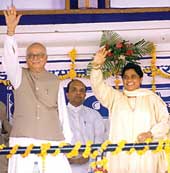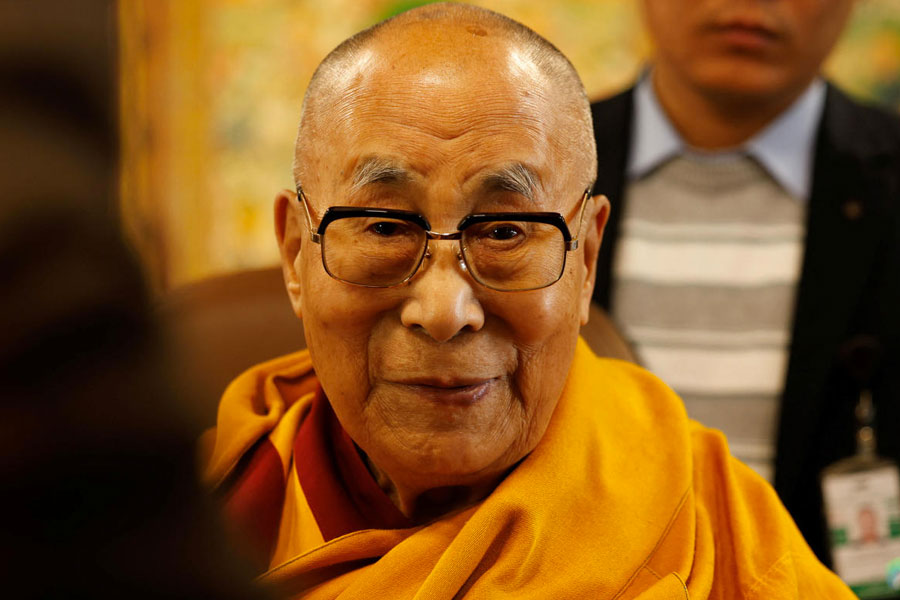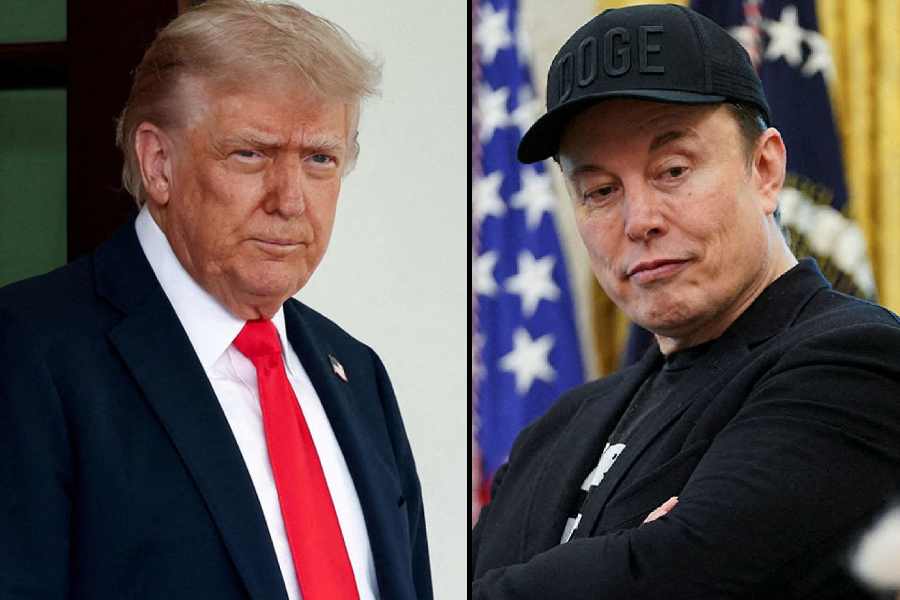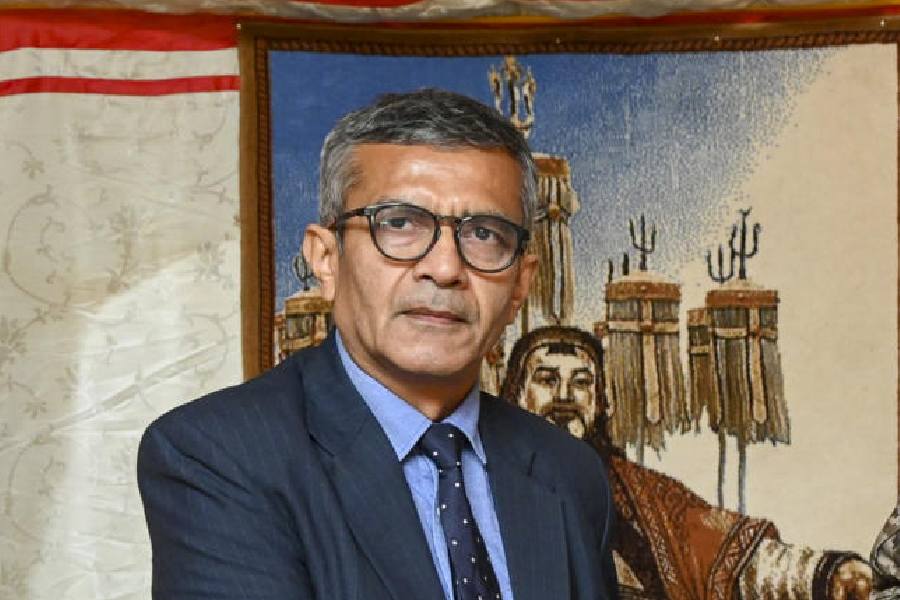|
|
| Dubious togetherness |
One of the more intriguing features of the left mentality is the innate conviction of natural superiority. Ever since the term “progressive” became associated with those who cheered Stalin and Mao to unimaginable acts of barbarism, albeit from a distance, the left has imagined itself a cut above the rest. Its record of reinventing human nature and economic management may have been absolutely disastrous but the left has traditionally revelled in the self-image of being what Bernard Shaw called the “stage army of the good”. Blessed with astonishing certitude, an innovative sense of style and overpowering sanctimoniousness, leftists have routinely notched a few more brownie points over conservatives who are naturally inarticulate, dowdy and disdainful of theory.
Much of this attitudinal conceit came tumbling out in Delhi last Monday at a press conference by Sahmat, the CPI(M)-controlled sanctuary that draws both the dogmatic and aesthetic left into purposeful activism. Reacting venomously to the statement of the prime minister, Manmohan Singh, in his press conference that he didn?t favour ?fundamentalism of the Left or the Right? and that the education policy ?should have space for all players?, the historian Irfan Habib said that the government had, in effect, accepted ?half the RSS case? of left bias in the curriculum. Habib also contested the prime minister?s assertion of ?Left fundamentalism?. The ?fundamentalism? tag, Habib was insistent, can only be pinned on the BJP and sangh parivar.
At the most mundane level, the Sahmat decision to publicly attack the prime minister for what most people will regard as a sensible and inoffensive observation, was governed by factional imperatives. Manmohan?s rehearsed aside against ?Left fundamentalism? was aimed at publicly distancing the government from the excesses of the ?detoxification? campaign of the human resource development minister, Arjun Singh. Having fallen into the Veer Savarkar pothole in Maharashtra, courtesy another bit of leftist grandstanding by the petroleum minister, Mani Shankar Aiyar, the prime minister was particularly anxious to maintain his distance from ideological extremism. Caught in the crossfire, he wanted to be sensible.
The Sahmat counter-offensive was the HRD minister?s signal to Manmohan that he would not be derailed from his de-saffronization programme and that he also enjoyed the support of the left. Considering Sahmat?s known proximity to the new dispensation in Shastri Bhavan, it was a carefully calibrated gesture of defiance. Left unpunished, it is certain to have serious repercussions on the authority of the prime minister.
However, to suggest that the fulmination of the likes of Habib was prompted entirely by intra-Congress rivalries would be over-simplistic. The academic left has traditionally prided itself as the repository of scholastic rigour and modernity. It has contrasted its cosmopolitan erudition and global connections with the mofussil clumsiness of those who took up cudgels on behalf of Murli Manohar Joshi. Leftist historians, for example, have long ceased to acknowledge that there can be an alternative to their stranglehold over the production of history in India. Dissenting voices have been systematically silenced or forced into exile by a left that has coupled ideological regimentation with firm control over college and university faculties.
It is one thing for a Joshi or even an Arun Shourie to take on the high-handedness and intolerance of the left in academia. These attacks were invariably painted as assaults on liberal traditions, particularly since Joshi also followed up his critique with attempts to bulldoze his own loyalists into positions of influence. That the saffron parvenu often lacked the necessary profundity to take on an entrenched old guard didn?t help matters either. The ?Hindu Right? was too preoccupied in arcane controversies over the Saraswati civilization, the origin of the Aryans, Vedic mathematics and astrology to mount any serious ideological challenge to the left stranglehold over the humanities. They painted themselves into an antediluvian corner.
Much before the verdict on May 13 unseated the NDA, the middle classes had been well and truly put off by Joshi?s ideological rectification campaign. I even suspect that this was an underlying factor behind the BJP?s failure to motivate the middle classes into renewing Atal Bihari Vajpayee?s mandate.
Manmohan?s criticism, however, belongs to a different league. Scholastically sound and equipped with the right Anglo-Saxon credentials, his criticism of the left?s academic gerrymandering had far greater credibility. More so because it was additionally blessed with the weight of common sense, the perfect antidote to ideological over-kill. Sahmat quite rightly sensed a greater danger from the prime minister than from Joshi.
Their fear is not misplaced. In his attack on the prime minister, Habib held out the historian Bipan Chandra?s textbook on modern Indian history as example of academically sound history. You cannot call it ?Left fundamentalism?, protested Habib, because it talks of (Mahatma) Gandhi and (Jawaharlal) Nehru. Of course it does, and projects these stalwarts in a very favourable light too. But is that reason to accept the left interpretation as the gospel truth?
It is undeniable that the left has come a long way from the time Rajni Palme Dutt denounced Mahatma Gandhi as an impediment to revolution and a bourgeois lackey in his 1940 classic. Today, left historians are at pains to stress the ?secular? credentials of both Gandhi and Nehru and underline their claims to be regarded as voices of an enlightened, progressive, national bourgeoisie. Yet, the central problematic of the left lies in grappling with the question: why did the anti-imperialist struggle in India not lead to a socialist revolution?
The French sociologist, Raymond Aron, once remarked that British sociology ?is essentially an attempt to make intellectual sense of the political problems of the Labour Party?. Extending that analogy, left historians have reduced Indian history to exercises in enhancing the political understanding of the two communist parties. This is at the root of the left fundamentalism. It goes a long way in explaining why the rich branch lines of historical inquiry like imperial decision-making, diplomatic history, administrative history and constitutional evolution have fallen into complete disuse. It also explains the over-emphasis on economic history, cultural studies and so-called mass movements. In suggesting that education should have ?space for all players?, Manmohan Singh has tacitly questioned the fundamental assumptions of the left.
Sahmat is to be complimented for gauging the significance of the prime minister?s observations, even if it views them as a political attack. The same can hardly be said of those who perceive themselves to be on the right. The progressives have traditionally viewed education as a means to the re-ordering of society. Hence their penchant for intrusiveness and disrespect for autonomy. Conservatives, on the other hand, have emphasized the virtues of knowledge for its own sake, with politics never defined as the be-all and end-all of national existence.
In its bid to replace left fundamentalism with another dogma aimed at enhancing the quality of nationhood, the right did itself a disservice. The left cannot, and must not, be confronted with tools borrowed from the socialist arsenal. It must be challenged with the overpowering weight of common sense, which in turn is shaped by autonomous, non-political institutions and by a deep sense of collective memory.
Manmohan Singh has provided a valuable opening to restore the balance in our education system. It would be a shame if the strategic clout of the left in the present dispensation manages to nullify his initiative. Our schools and universities have become the laboratories of a grotesque exercise in regimentation. The process must be reversed. It would help if the next ministerial reshuffle produces a new minister in Shastri Bhavan.











